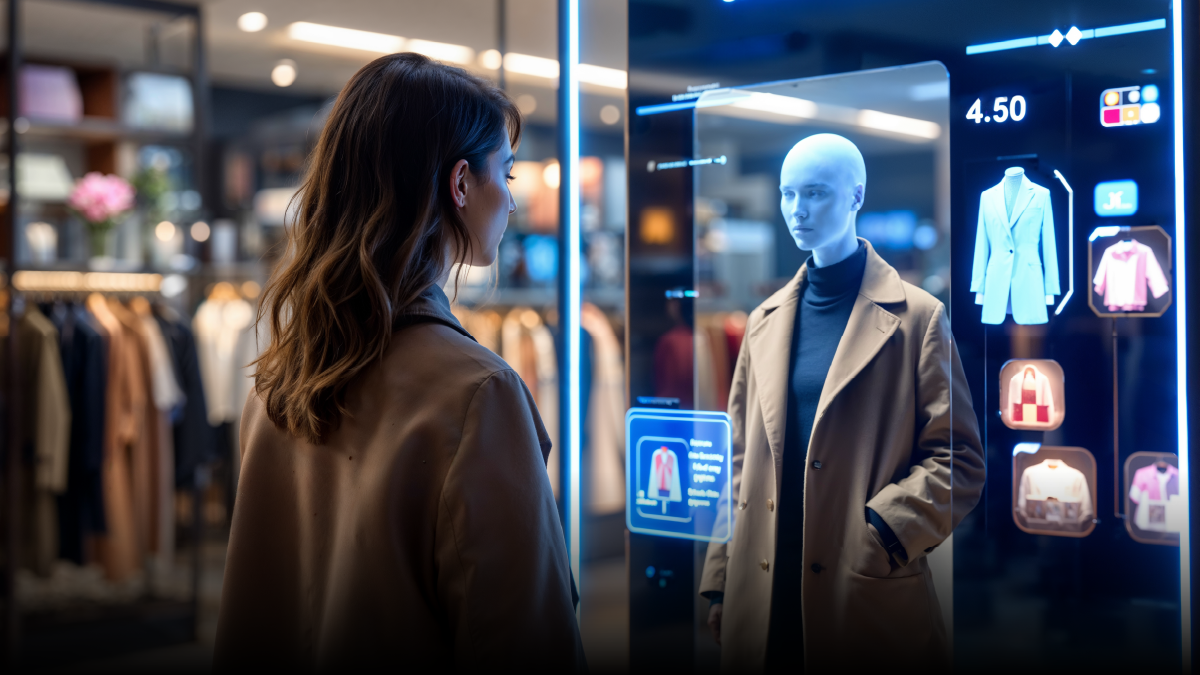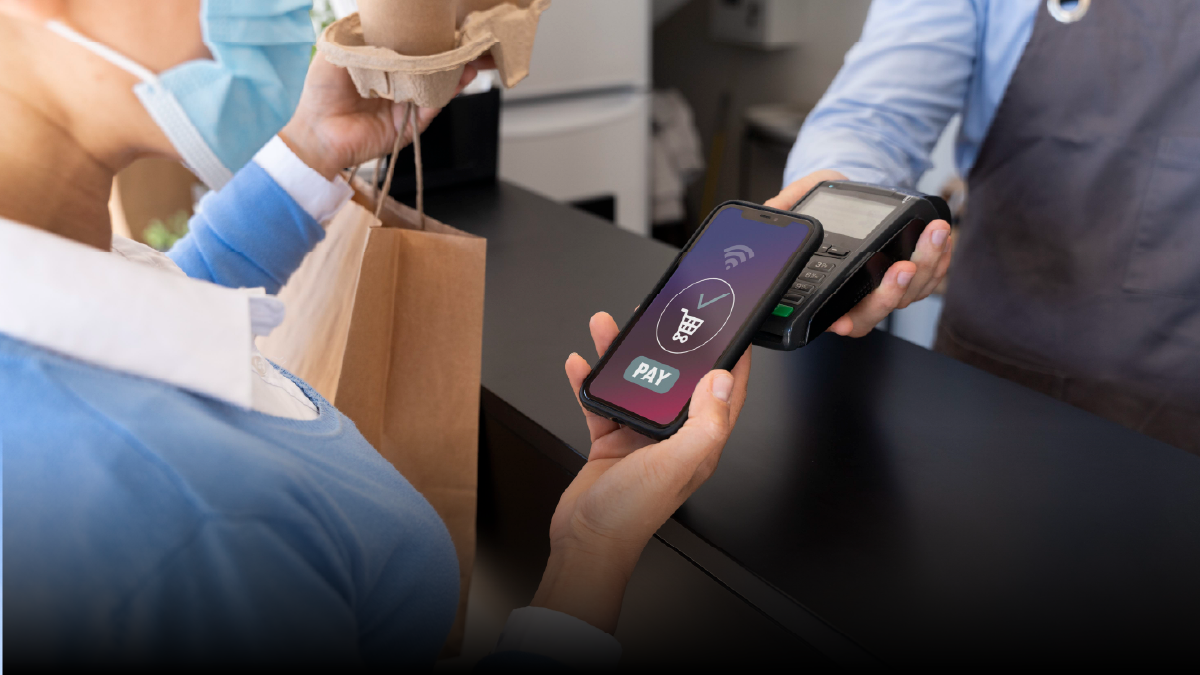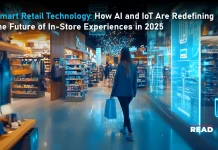Stores today are not just shelves and products anymore. The most significant factor behind all this change is the merging of traditional and digital worlds. Nowadays, consumers want the best of both worlds: they want quick, effortless, and smooth transactions, but they also value personal connection. In the future, smart retail will regard the combination of technology that interacts with consumers in a friendly way and brick-and-mortar stores as the main basis operating in the retail marketplace. AI, IoT, and data have changed the game for retailers; instead of being seen as the means to enhance the operational aspect, they are now considered to be part of the very nature of retail.
The worldwide online shopping market is estimated to hit 4.8 trillion dollars by 2025. That number alone shows why retailers cannot wait. Technology is not optional. It is what keeps stores alive, keeps shelves stocked, keeps customers happy, and makes shopping feel personal.
In this article we will look at how stores are connecting operations, creating hyper-personalized experiences, and navigating the strategy and challenges behind the connected store. It is all about efficiency, experience, and staying ahead.
Pillar 1. The Foundation of Connectivity (IoT and Data Analytics)

Today when you take a step into a shop, it does not just have racks and items. Rather, there is a hidden network of sensors, RFID tags, electronic shelf labels, etc., that constantly feed data. Real-time tracking is taking place of every product’s movement, every people’s visit to an aisle, and every vacant shelf. The store is literally watching itself and sending information to managers instantly. You do not have to wait for end-of-day reports anymore. You can see what is happening right now and act on it.
Edge computing makes all this possible because the processing happens right there in the store instead of waiting on the cloud somewhere far away. So alerts about low stock, misplaced items, or weird patterns appear immediately. The store can respond, employees can act, customers get what they want without noticing the system running in the background. It makes the difference between waiting for problems to pile up and fixing things as they happen.
Then there is AI. Machine learning looks at the data and tries to figure out patterns, predicts what will sell, spots what is unusual. Generative AI can take that information and do more, like create content for displays, recommend products, guide a customer online or in the store. Software developers and retailers using Microsoft AI solutions are scaling operations faster, making analytics and recommendations happen quicker than before.
Also Read: Bending the Future: How Flexible Electronics Are Redefining Smart Devices
All this together, sensors and AI, it makes a store feel alive. Operations run smoother, customers get faster responses, staff can focus on the real human stuff. This is what smart retail technology is doing now, quietly changing how shopping works every single day.
Pillar 2. Operational Efficiency and Loss Prevention

Running a store these days is not just putting products on shelves and hoping people buy them. Every shelf, every product, every little movement is being tracked. Smart shelves and RFID tags are constantly sending data all the time. You can see what is selling, what is sitting, what is running low, all in real time. The store is literally telling you what it needs. It is talking to you without words. Managers do not have to wait for reports at the end of the day. They can see what is happening right now and make changes immediately.
AI takes that data and makes sense of it. Machine learning can figure out patterns, predict what will sell, and even when it will sell. The system reviews historical data, evaluates the meteorological conditions, monitors online social activities and computes the required quantity of the product to be placed in the shelves. Products can be re-ordered by the system automatically without any human intervention. This is the IoT-AI loop working efficiently, ensuring that the store is always operable, customers are happy as they can always locate their desired products. It is smart retail technology working quietly in the background.
Shrinkage used to be something stores dealt with after the fact, finding out later that something was missing. Now computer vision powered CCTV watches constantly. It notices if someone does something unusual, if a self-checkout goes wrong, or if behavior looks suspicious. The system flags it instantly. Loss prevention happens while the store is operating, not days later.
Across retail and CPG in 2025 AI is changing everything. Predictive inventory, dynamic pricing, and hyper-personalized customer engagement are no longer ideas for the future. They are happening right now. Stores are running better, customers are happier, and retailers are keeping up in a world that moves fast. The combination of sensors, AI, and real-time insights is what makes it all possible and it is only going to grow from here.
Pillar 3. Hyper-Personalized Customer Journeys
Walking into a store today does not feel the same as it used to. You pick up a product and sometimes you do not even notice there is no cashier. Some stores, like Amazon Go, use sensors and AI to track what you grab and what you put back and when you leave you are already charged. You do not have to wait in a line, you do not have to scan anything, it just happens. Smart carts can do almost the same thing. They keep track of everything inside, they suggest items you might like, they make the payment process faster. Then there are contactless payments everywhere and some stores even let you pay with your face or your fingerprint. Everything is quicker and smoother, you barely notice it and it just works.
It’s not only the checkout process that gets revamped but also the entire shopping experience. Stores are incorporating augmented reality technology so that you can virtually experiment with clothing or cosmetic items without physical contact. You can already get an idea of how a coat looks on you or how a particular shade of lipstick would look on you before even approaching the counter. Some stores are experimenting with spatial commerce so you can explore the store digitally as you walk through it physically. Digital signage is not static anymore. It changes depending on who is near, it shows different things based on who you are or how busy the store is. It is like the store is responding to you personally without saying a word.
AI agents are also helping in ways that feel personal. They guide you through the store, answer your questions, suggest products, tell you if something is in stock. It feels like having someone with you who knows what you like, who remembers your tastes, who never gets tired.
AI and IoT-enabled checkout-free shops are turning effortless shopping into reality. Payment processing periods are considerably reduced, the whole process feels quicker, the store is not just a place where you go, it knows your desires almost as fast as you do, and the experience is tailored to you. The once impersonal shopping has now become like a personal one. The entire store, how it functions, and how it answers back are all the elements of this ultra-personalized journey that is now taking place.
Pillar 4. Strategic Challenges and Future Outlook
Running a smart store is not all smooth. There are challenges that come with all this technology. One big issue is data. Stores have so many different systems, different platforms, different kinds of information and getting all of it to work together is hard. You cannot train AI well if the data is stuck in silos or does not talk to each other. Then there is privacy. Consumers always look for easy options but at the same time they mean to stay secure. You must choose your data usage very carefully, comply with regulations such as GDPR or CCPA, be open about your intentions, or you may lose trust. Trust is a tough thing to obtain and a very simple thing to lose.
Looking ahead, stores are starting to combine what they know from smart systems with media and marketing. Retail Media Networks and in-store data are coming together so that what the customer sees online, what they see in the store, all of it can be personalized. Using AI for marketing makes the campaigns and shopping experience better. Retailers that have already adopted Google’s AI-powered marketing solutions are enjoying the benefits of increased customer engagement. This is due to the personalized feeling of the campaigns and the streamlined customer experience. That is the future taking shape right now.
The future stores will be the ones that will be able to adapt by themselves. More and more robots and AI agents performing the tasks of restocking shelves, directing customers, or even talking to them are being introduced. The connected store is not a mere trial anymore. It is real. It is about making decisions faster, reacting to what is happening instantly, keeping customers engaged, and giving them a seamless experience. The challenges are real, but the future is full of possibilities if stores can balance technology, trust, and strategy.
Beyond the Pilot Project
The combination of these technologies: Artificial Intelligence, the Internet of Things, and Big Data, is tackling the issues that previously impeded retail. There remains a steady supply of goods in the store, the buyer gets what he/she wants, checkout is expedited, and the store is dealing with the present situation instead of the past. The personnel can concentrate on providing assistance rather than troubleshooting. The smart retail era is not a future idea anymore. It is present, it is authentic, and the retailers that ignore it are playing a losing game. The partnership of efficiency and customer experience is already a fact, and 2025 is confirming the crucialness of this scenario.




